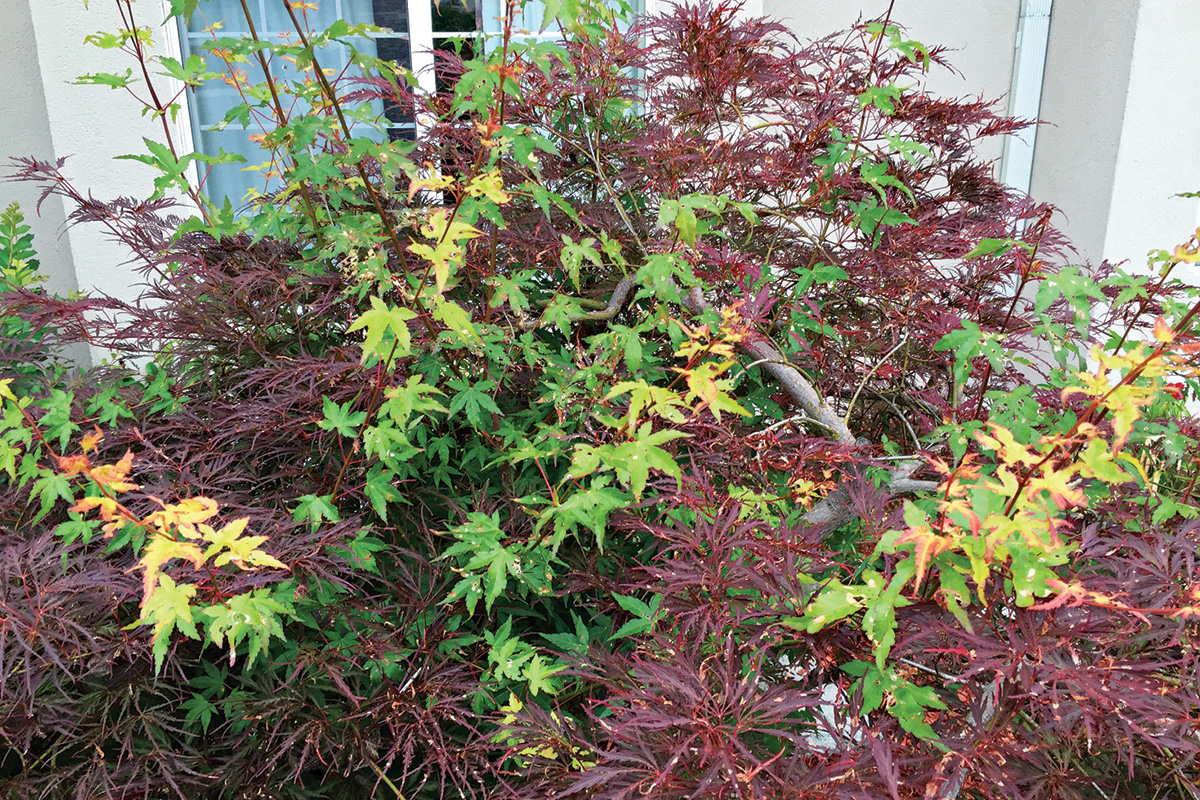
Although Japanese maples are generally easy-care plants, it is worth the effort to site them properly, monitor them regularly, and provide the best possible soil conditions. These precautions can help to head off a few possible difficulties.
1. Verticillium wilt

This fungal pathogen exists in most soils across the United States. In susceptible woody plants, verticillium can multiply in an affected plant’s xylem, where it can cut off water movement and eventually lead to plant death. The best ways to avoid verticillium problems in the garden are to plant resistant species (not an option with maples) and to keep susceptible plants from becoming stressed, since healthy plants are better at holding off disease progression. Avoiding summer drought stress is key with Japanese maples.
2. Frost damage

The very thin bark of most Japanese maples means that they store far fewer carbohydrates than species with thicker bark. When they get hit with a spring freeze that kills back the new shoot growth, there are often insufficient stored reserves to fuel a second flush of growth. Most Japanese maples are notoriously bad at recovering from spring freeze injury. Avoid low frost pockets when siting new Japanese maple plantings.
3. Thin bark

Most Asian maples have very thin bark, which makes them susceptible to a wide range of physical damage problems. Damage to trunks from string trimmers and lawn mowers doesn’t heal well and can lead to overall poor performance and a gradual decline. Deer rubbing, sunscald, and other physical damage to bark can be difficult to reverse in most of these maple species.
4. Suckers from rootstock

Most named Japanese maple cultivars are budded on seedling rootstock. As with all grafted and budded trees, it is critical to remove any shoots that arise from the seedling rootstock, as they typically show much greater vigor than shoots of the grafted variety. Even with grafts placed low and close to the ground, graft unions are easily identified by a slight swelling and a suture line where the scion meets the rootstock.
Learn more:
An Easy Approach to Pruning Japanese Maples
Great Japanese Maple Varieties
Paul Cappiello, Ph.D., is the executive director of Yew Dell Botanical Gardens in Crestwood, Kentucky.


















Comments
Log in or create an account to post a comment.
Sign up Log in